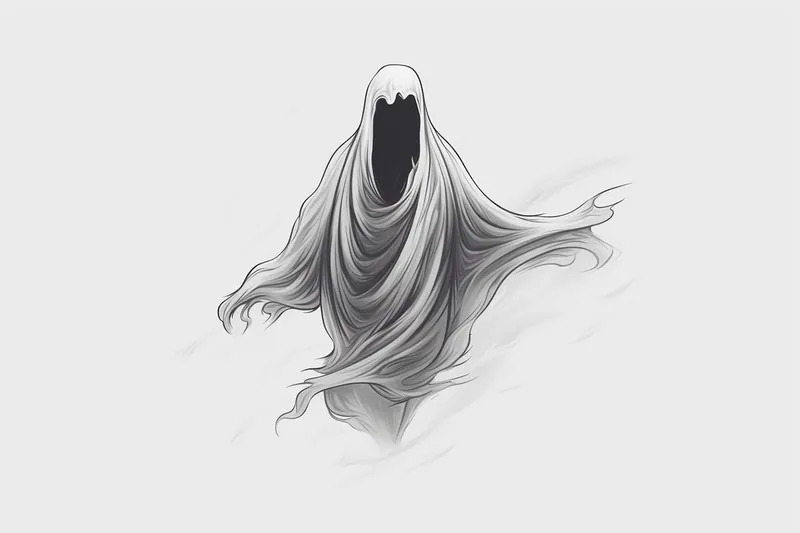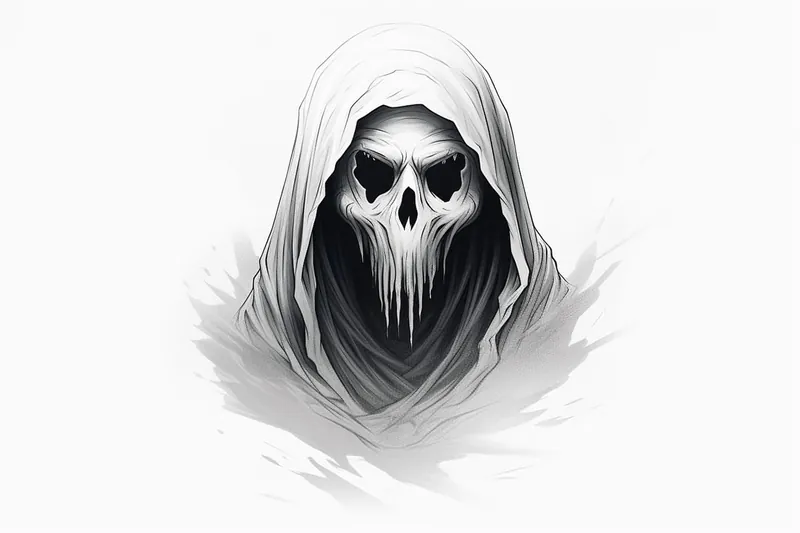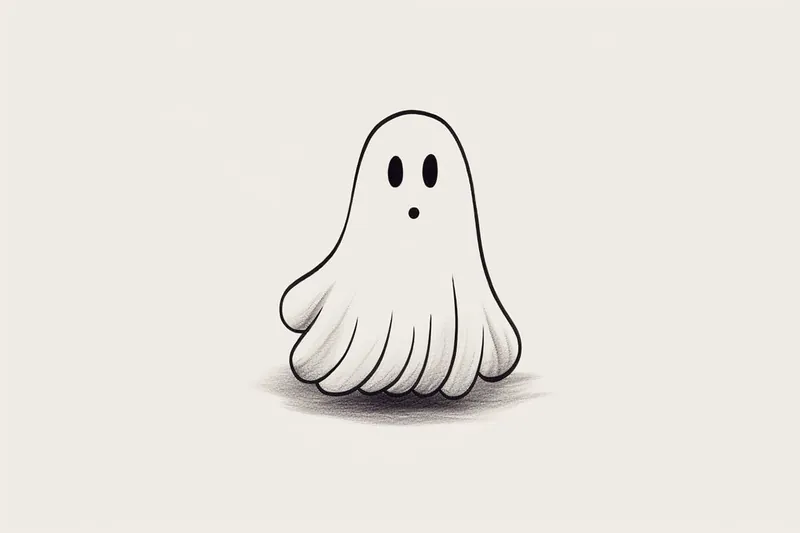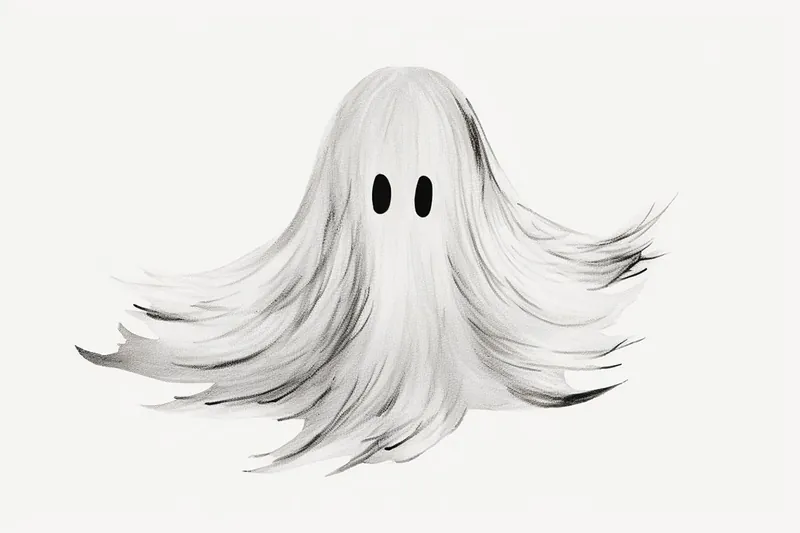How to Draw a Ghost
Learn how to draw a ghost in this beginner-friendly drawing tutorial. Follow the step-by-step instructions to create a spooky and fun artwork for Halloween.

Materials You'll Need
- Pencil
- Paper
- Eraser
Ghosts are a timeless subject in art, instantly recognizable and evocative of mystery, playfulness, or even gentle spookiness. Whether inspired by classic folklore, popular cartoons, or Halloween traditions, ghosts can be drawn in a variety of styles—from eerie and haunting to cute and whimsical. Learning how to draw a ghost allows you to tap into your creativity and bring a touch of supernatural charm to your art projects. This subject is especially popular for seasonal crafts, greeting cards, story illustrations, and party decorations, making it a versatile addition to your drawing repertoire.
If you are curious about how to draw a ghost, you'll be glad to know that this tutorial is designed with beginners in mind. Drawing a ghost typically involves simple shapes and smooth lines, making it an excellent exercise for those just starting out or anyone who wants to practice basic drawing techniques like outlining, shading, and adding expressive facial features. You'll also learn how to give your ghost a sense of movement and personality with just a few well-placed curves and details. No advanced skills are required—just a willingness to experiment and have fun.
As you follow along, remember that drawing is as much about enjoyment as it is about technique. Don't worry about perfection; each ghost you create can have its own unique character. So grab your pencil, paper, and eraser, and let's embark on this creative journey together. With a little guidance and imagination, you'll soon master how to draw a ghost that's perfect for your next art project!
Materials Required
To begin drawing a ghost, you will need the following materials:
- Pencil: A regular graphite pencil is ideal for sketching and outlining your ghost.
- Paper: Any paper will do, but a blank sketchbook or drawing paper is recommended.
- Eraser: An eraser will come in handy for correcting mistakes or adjusting your ghost drawing.
- Fine-tip Marker or Pen: You can use a marker or pen to trace over your pencil lines and add bold outlines to your ghost, giving it a clean, finished look.
- Coloring Tools (optional): If you wish to add color to your ghost drawing, you can use colored pencils, markers, or any other coloring tools.
Step 1: Sketch the Basic Shape
Start by lightly sketching a simple oval shape in the center of your paper. This will serve as the head of the ghost. It doesn't need to be perfect, as we'll be refining the shape later on.
Step 2: Add the Body
Tip: To enhance your ghost drawing, consider experimenting with different expressions and accessories to give your ghost character and personality; for example, try adding playful elements like a tiny hat, a bowtie, or even a spooky little companion. This not only makes your artwork more engaging but also allows you to explore various styles and themes, helping you develop your unique artistic voice.
Next, draw two curved lines extending down from the bottom of the oval shape to create the body of the ghost. Make sure the lines are slightly wider at the bottom to give the illusion of a flowing, ethereal form.
Step 3: Outline the Arms
Extend two curved lines outward from the sides of the body to create the ghost's arms. The lines should be slightly curved and taper towards the ends, resembling wispy, flowing arms. Feel free to adjust the length and shape of the arms to add your own personal touch.
Step 4: Draw the Lower Body
At the bottom of the ghost's body, draw another curved line that wraps around to form the lower body. This line should be similar in shape to the upper body, but slightly wider to give the ghost a more flowing appearance.
Step 5: Sketch the Eyes and Mouth
Now it's time to give your ghost some facial features. For a classic ghost look, draw two large oval-shaped eyes near the top of the head. Inside each eye, draw a smaller oval shape to represent the iris. Below the eyes, draw a simple curved line to form the ghost's mouth. You can make the mouth happy, sad, or even slightly open to give your ghost some character.
Step 6: Refine the Ghost's Shape
Using your initial sketch as a guide, go over the main outline of the ghost, refining and smoothing out any rough edges. Make the lines darker and more defined while erasing any unnecessary guidelines or overlapping lines.
Step 7: Add Details
To make your ghost drawing more interesting, you can add some details. For instance, you can draw small curved lines within the body and arms to create a wispy, ethereal texture. You can also give your ghost some personality by adding eyebrows, eyelashes, or even accessories such as a hat or bowtie. Be creative and have fun!
Step 8: Ink or Trace Over Your Drawing
Once you're satisfied with your ghost drawing, it's time to make it permanent. Use a fine-tip marker or pen to carefully trace over the pencil lines, creating bold outlines. Be patient and take your time to ensure clean, smooth lines. Allow the ink to dry completely before erasing any remaining pencil marks.
Step 9: Add Color (optional)
If you want to add color to your ghost drawing, now is the time to do so. You can use colored pencils, markers, or any other coloring tools of your choice. Consider using shades of white, gray, or pale blue to maintain a ghostly appearance. Experiment with different color combinations and shading techniques to bring your ghost to life!
Wild Inspiration: Imagine your ghost not as a simple apparition, but as the ethereal conductor of a swirling cosmic orchestra—its transparent form floating above a stage made of stardust, with spectral musical notes and glowing planetary orbs swirling around in harmony. Instead of haunting a house, your ghost could be channeling the energy of distant galaxies, its cloak shimmering with nebula-like patterns and comet trails. Experiment with luminous colors, adding glows and sparkling highlights to suggest otherworldly magic, and let the ghost's eyes reflect the wonder of the universe it commands. By blending the supernatural with the celestial, you'll create a scene that's both haunting and awe-inspiring, pushing your imagination to new, intergalactic heights!
Conclusion
Congratulations! You've successfully learned how to draw a ghost. By following this step-by-step guide, you've created a spooky and fun piece of artwork. Remember, practice makes perfect, so don't hesitate to experiment with different variations and styles as you continue to develop your drawing skills. You can now use your ghost drawing as a standalone artwork or incorporate it into your Halloween decorations. Happy drawing!
Gallery of Ghost Drawings



Fun Facts About Ghost
- The word "ghost" comes from the Old English word gāst, meaning spirit or soul.
- Ghosts are a common theme in folklore and mythology across cultures, with stories dating back thousands of years, as noted by the Encyclopedia Britannica.
- The classic "sheet ghost" look popularized in cartoons and Halloween costumes is believed to have originated from burial shrouds used in the past.
- Many people celebrate ghosts during Halloween, a holiday with roots in the ancient Celtic festival of Samhain.
- Ghosts are a popular subject in art and literature, inspiring works from Shakespeare's "Hamlet" to modern movies.
- Some cultures believe ghosts can be friendly or helpful, not just scary, as seen in stories like Japanese yūrei.
- The famous "Brown Lady of Raynham Hall" photograph is one of the most well-known alleged ghost photos.
- Ghost hunting is a popular hobby, with TV shows and groups dedicated to investigating haunted locations.
Suggestions for Scenes and Settings for Ghost Drawings
- A playful ghost floating above a pumpkin patch on Halloween night.
- A group of friendly ghosts having a tea party in an enchanted forest.
- A mischievous ghost popping out from behind an old, creaky door in a haunted house.
- A cute ghost peeking out from under a blanket fort during a spooky sleepover.
- A ghost wearing a whimsical hat and bowtie, drifting through a moonlit graveyard.
- A ghost with a lantern guiding lost travelers through a foggy, mysterious swamp.
- A line of tiny baby ghosts playing hide and seek among ancient tombstones.
- A ghostly figure painting pictures on the walls of an abandoned castle.
- A cheerful ghost waving from a window on a rainy night, with glowing candles nearby.
- A shy ghost hiding behind a stack of books in a magical library.